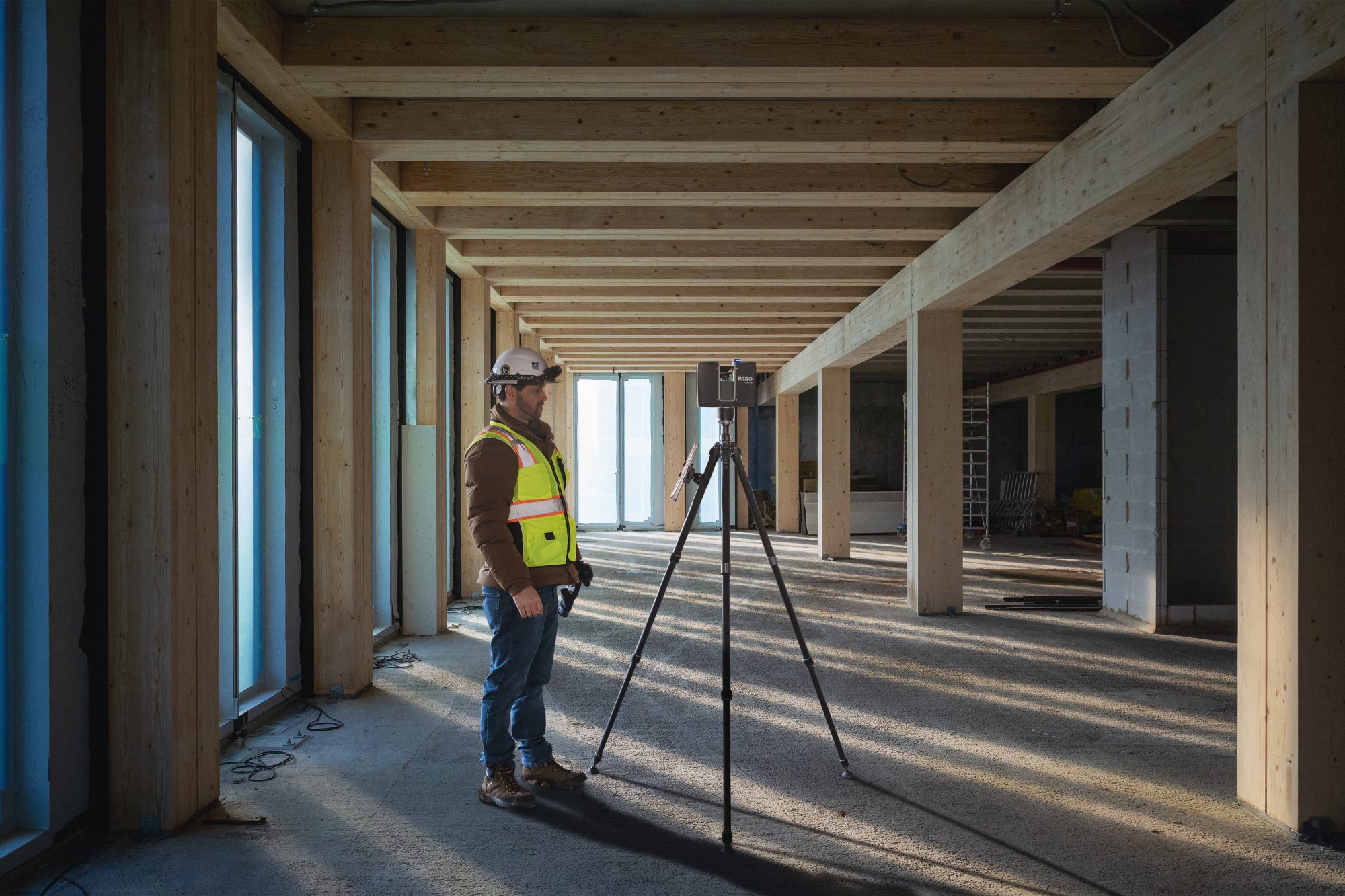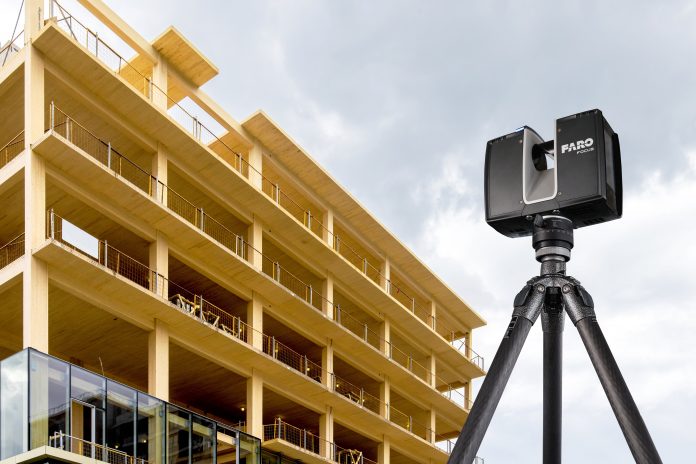The benefits of 3D laser scanning include providing precise, data-driven insights to turn mass timber construction’s moment into a movement, explains FARO Technologies
The calendar may have read January last month but for millions of Europeans, it felt more like May or even June as temperatures soared to unheard-of winter heights when at least seven countries recorded their hottest New Year’s Day – ever.
With meteorologists describing the heat wave as “totally insane” and “the most extreme event ever seen in European climatology” – St James’s Park in London hit 16.3C to kickstart 2023 – it’s natural for thoughts to turn to human-accelerated climate change and the ways in which sustainability measures must be implemented in order to reduce the release of planet-warming gases.
Considering that the built environment contributes up to 40% of global CO2 emissions (14.6 gigatons), increasing the odds of more out-of-season scorchers, it’s imperative that the construction industry in the UK and around the world work to address the problem.
The benefits of 3D laser scanning
Fortunately, there are two solutions rapidly gaining traction that contractors, structural engineers and architects would be wise to adopt: mass timber construction for the actual build, and 3D laser scanning that enables accurate and reliable as-built data capture and documentation: essential for progress monitoring, efficiency gains, faster project completion and construction verification.
Mass timber for the masses
Unlike traditional log homes or even homes made from wood, mass timber is a composite material. Typically made from pine, spruce or fir, when layered together with adhesives to form panels and beams, it can rival steel in terms of its strength and durability.
According to a 2022 report by the Council on Tall Buildings & Urban Habitat (TCBU), there were 139 mass timber buildings in the world eight storeys or higher and 71% of them are in Europe with more on the way.
In the UK, wooden skyscrapers have gotten a lot of media attention of late and the City of London is considering a legislative rules change to allow taller wood structures in the future, like the planned Oakwood Tower, slated to be built in the heart of London’s Barbican Estate, a Grade II listed concrete residential complex.
Overall, mass timber buildings are lightweight relative to their load-bearing capability, are made from a sustainable source (wood harvested from protected forests to ensure a balanced cycle of cutting and replacing), have excellent thermal properties (lowering a building’s HVAC costs and energy usage) and feature a reduced carbon footprint due to the chemical element already being sequestered in the wood itself, not to mention the reduced equipment/personnel required on-site since mass timber is a prefabricated product manufactured in controlled environments.
3D point cloud power
As noted in this article’s title, speed and accuracy are the chief advantages of incorporating 3D laser scanning into mass timber construction.
This is true for any as-built building material like steel or reinforced concrete, but even more so when dealing with wood. For instance, while wood has long been prized for its aesthetics and considered a finishing material, structural timber introduces temperature stability issues, causing elongation or shortening and member connection accuracy for fit-up and detailing.
Beyond wood-specific needs, new construction projects involve many different stakeholders that depend on project information in the form of drawings, submittals, imagery and models, etc.
A complete and accurate account of a building’s condition
Subcontractors, too, are integral to the construction process as each one is focused on a separate but interrelated task. In these complex projects, progress depends on each subtask and each subsystem (MEP, for instance) working seamlessly.
3D laser scanning ensures a complete and accurate record of build’s as-built condition. And it allows multiple subcontractors and stakeholders the ability to see how an entire project is coming together. In scenarios where a design utilises prefabricated materials and components like in mass timber, there is even greater emphasis on installation verification before proceeding to the next stage.
Not only must subcontractors have complete project line-of-sight, but engineers must also know when a building design deviates from architectural renderings and where on-site/in-field improvisation may be required. Lacking that line-of-sight could have negative downstream consequences for other trades resulting in lost time, money and project delays.

Last, as-built documentation provided by 3D laser scanning helps fulfil contractual obligations between contractors and other project stakeholders. By leveraging the capability of accurate and reliable 3D data, stakeholders can be certain that work was performed correctly, on-time and on-budget.
Combined with sophisticated software that allows users to create detailed 3D visualisations of real-world objects and environments, like stairs, roofs, walls and flooring, and export that data in various formats, project stakeholders can be confident that their mass timber project is on track to achieve mass success.
Going against the grain?
While it remains true that mass timber construction has its challenges, namely a lack of awareness of the building material, concerns over scalability at industrial levels, regulatory barriers, insurance costs and uncertainty over flammability, its benefits outweigh the materials’ perceived drawbacks.
And one of best ways to ensure mass timber’s moment turns into a movement is by augmenting the popular biomass composite with the most accurate and precise, data-generating technology that the 3D measurement industry can provide.
3D laser scanning is that solution. And as mass timber’s adoption rates continue to rise, the percentage share of the construction industry’s CO2 emissions will gradually decrease.
Such efforts are unlikely to prevent future winter heatwaves in the near term. But along with multiple cross-industry sustainability initiatives, our “totally insane” climate will begin to stabilise, protecting the very forests on which mass timber’s future growth depends.
Jessica Hale
Global Corporate Communications
Manager
FARO Technologies
Tel: +1 407.333.9911














